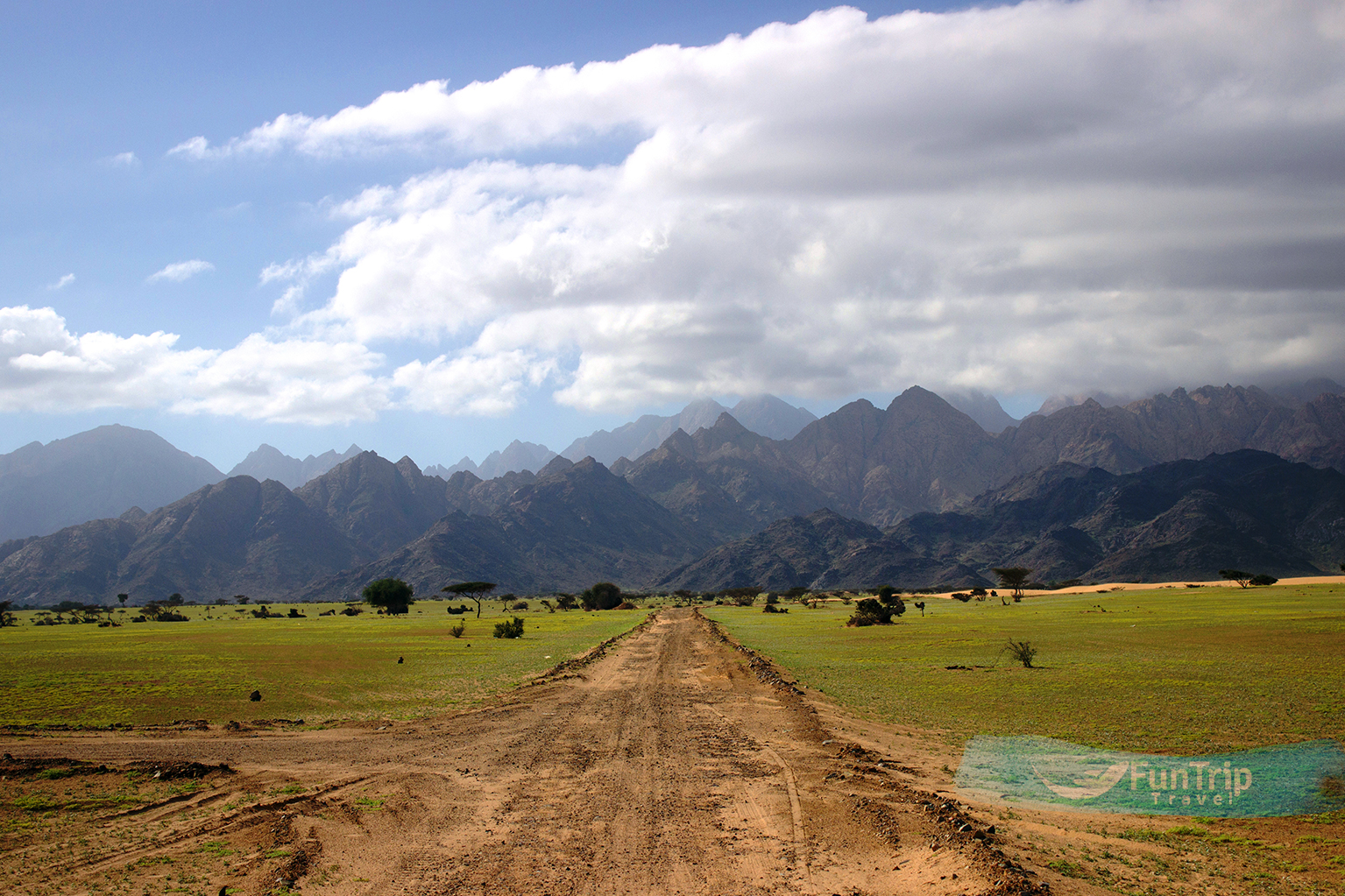Marsa Alam is one of Egypt’s most beautiful cities. It is sometimes referred to as Egypt’s Maldives due to its stunning beaches and clear waters. Marsa Alam used to be a tiny fishing community on the Red Sea, about 280 km from Hurghada and 700 km from Cairo. Marsa Alam is a well-known resort town in Egypt, with development beginning in 1995. It is distinguished by its elevation above sea level, rugged terrain, and the cleanliness of the sea waters. Marsa Alam was well-known in Ancient Egypt until the Roman period, as evidenced by inscriptions etched in the rocks portraying animals and hunters, as well as routes established during the reign of Ptolemy II. Marsa Alam is ideal for windsurfers, scuba divers, and snorkelers, since it boasts beautiful crystal water, numerous coral reefs, and a diverse array of sea critters and plants. This wonderful city offers a variety of additional activities, such as camel riding, safaris, and simply relaxing by the sea. Marsa Alam is the ideal destination for a pleasant and tranquil vacation. There are numerous methods to get to the city: fly directly to Marsa Alam International Airport, which takes one hour, or take a bus from Cairo, which takes 10 to 12 hours. The city’s climate is similar to a hot desert, with more stable temperatures than destinations in the north, such as Hurghada and Sharm El-Sheikh. Because of its climate, Marsa Alam attracts more European tourists, particularly from Italy, who prefer the pleasant weather to other cities. Now let us explore this little, wonderful resort and see what there is to do in the magnificent city, as well as where you can stay.

EXPLORE. CONNECT. CREATE MEMORIES
Port Ghalib
In 2011, Port Ghalib was transformed into the largest tourist resort and marina complex, from a previously deserted stretch of desert coastline. Port Ghalib is located on the Red Sea shore, 3 km from Marsa Alam’s international airport and 65 km north of Marsa Alam. There are other activities available in this magnificent location, such as having a drink at a table by the waterfront, going shopping, and attending international music events. Also, enjoy the nightlife in Port Ghalib by visiting the Red Club and the VIP Disco Club at the Palace, where the DJ plays a variety of house music.
If you want to participate in water sports, you can visit a diving centre and try windsurfing, parasailing, or jet skiing. There are numerous restaurants there, and you may taste any cuisine you like, including Italian, Lebanese, and Egyptian. It’s a wonderful area where you can spend the entire day doing whatever you want without having to go any place.
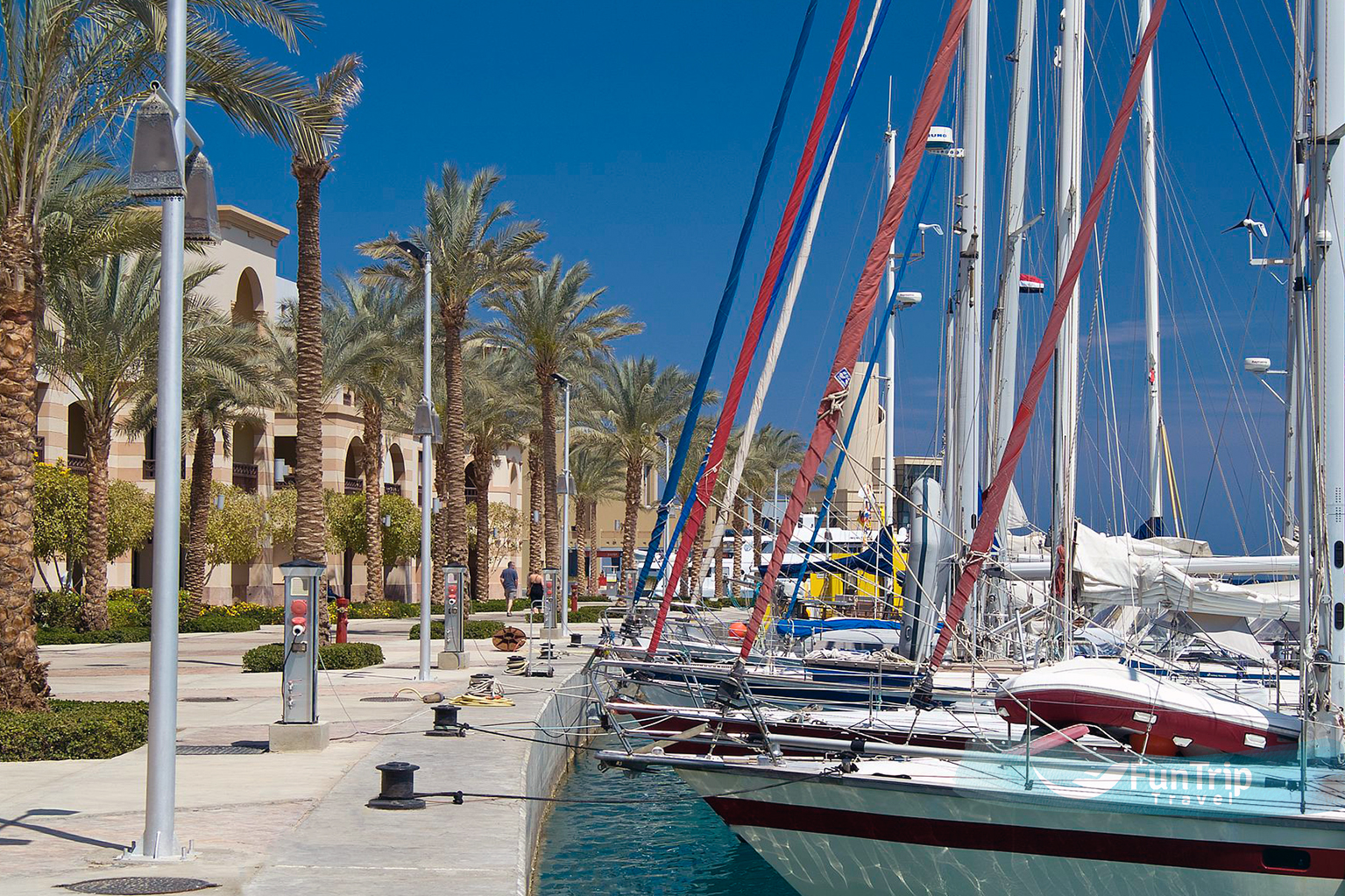
The Lake of the Meteor
Is a one-of-a-kind site that is often overlooked due to its remote location and special road access. The lake is located 14 kilometres south of Marsa Alam, and residents believe that a meteorite fell from the sky and caused the hole, which was eventually filled with beautiful turquoise water. The region is around 3000 square metres, and it is one of the most popular diving destinations, recognised for its brilliant coral reefs. When you visit this lake, you will notice the clear blue water and the pleasant temperature, which draws many European tourists to this location each year for a few hours.
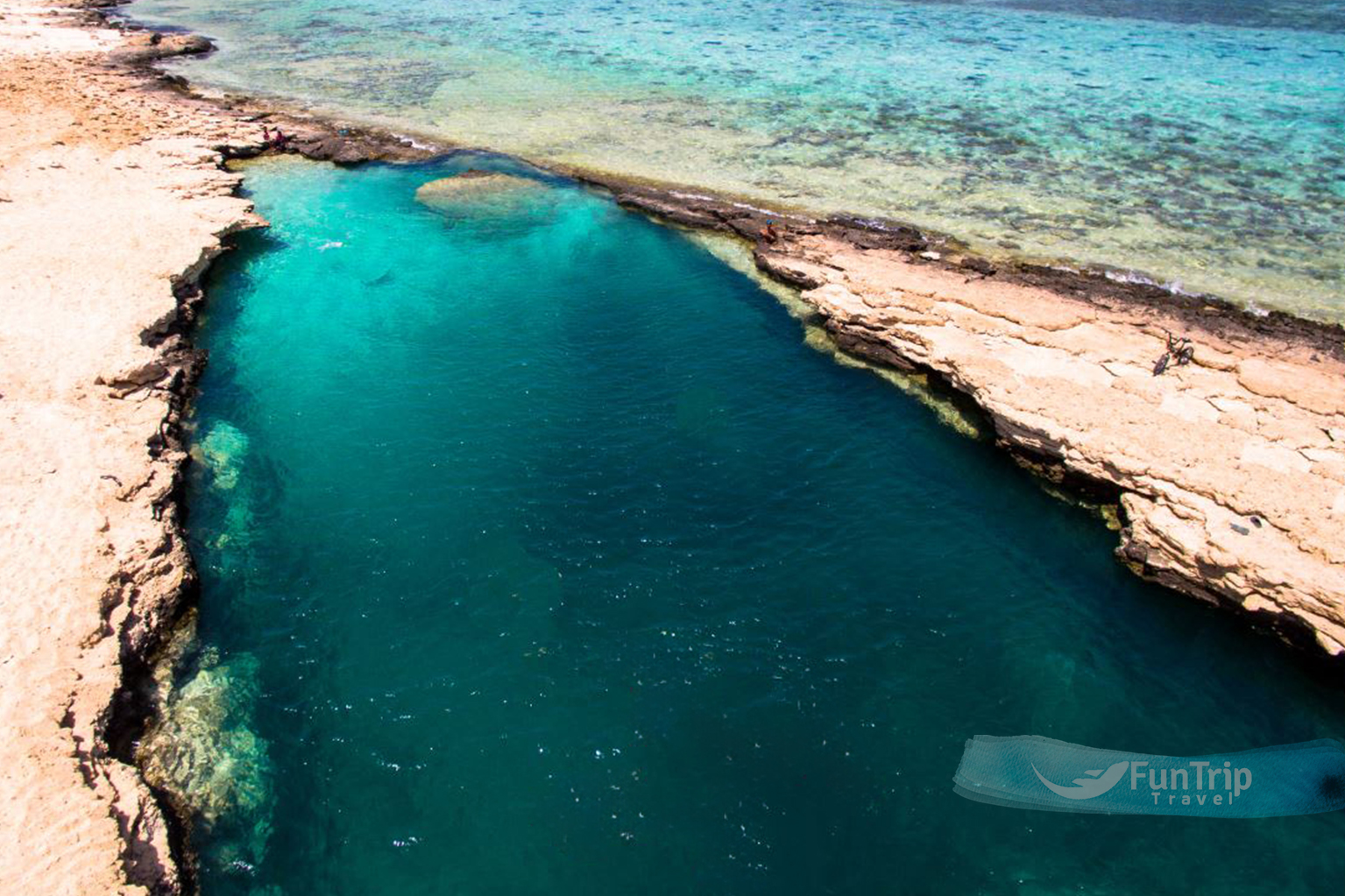
Marsa Alam Astronomy Center
Located 23 km outside the city on a hill in the Red Sea Mountains, to learn about astronomy in addition to snorkelling and diving. You will attend presentations about the Ababda Bedouin tribe while drinking traditional tea and coffee. While there, you will learn more about the night sky, including seasonal zodiacs, celestial bodies, planets, moon phases, and regional peculiar phenomena, as well as how to use a high-intensity telescope to observe the sky. The Marsa Alam Astronomy Centre also features a presentation about the star signs and their mythology, as well as life-color images projected straight through the telescope on a widescreen projector. This is the ideal location for astronomers and environment enthusiasts.

Abu Dabbab Bay
Located around 35 km north of Marsa Alam, is the main meeting spot for endangered sea turtles. The bay has a national and natural abundance of living species, therefore divers and snorkelers from all over the world come to swim, dive, and photograph these calm creatures. The seaweeds in the bay are the region’s most unique feature. Tourists are permitted to snorkel and dive as long as they are accompanied by guides certified by the Chamber of Tourism for Diving and Marine Activities, which has seven members for snorkelling and five for diving. To protect the ecology and the diversity of animal species in the area, it is banned to touch, feed, or swarm around them.
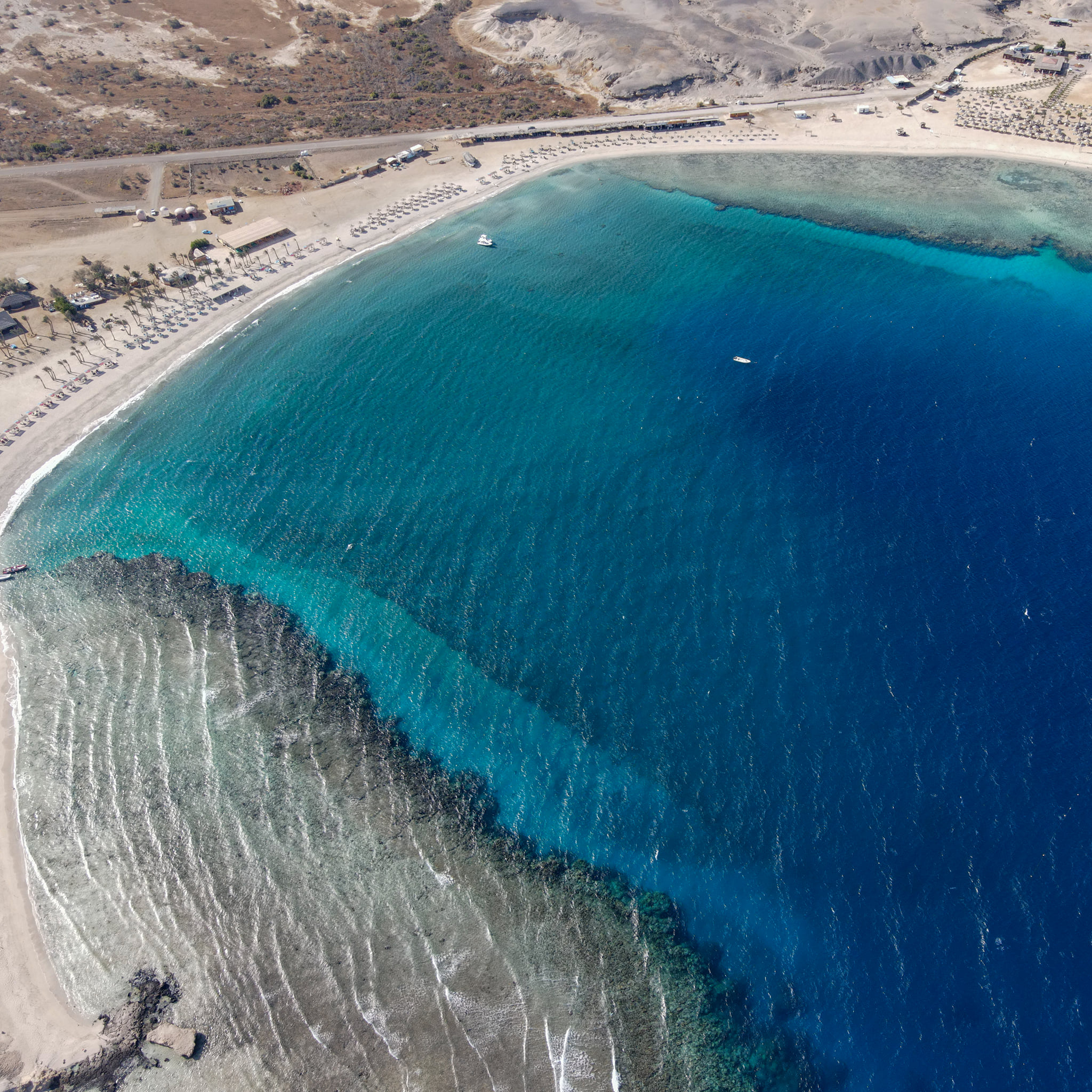
Samadi Reefs (Dolphin House)
Samadi Reefs is located south of Marsa Alam. It is called the Dolphin House due to the large presence of dolphins in it. It was named Samadi after the Samad bird that used to visit the area at the time of migration. The area has the largest concentration of dolphins in Africa and the Middle East. There, you can spot many kinds of dolphins, like the spinning and glass-nosed ones.
This place was divided into three areas A, B, and C. The first area is specified for the comfort of dolphins and no activities are allowed in this area, while the second area is for swimming only, and the third area is for waiting for tourist boats. If Other than the dolphins, there are many kinds of fish, such as the butterflyfish, the angels, barracuda, tuna fish, and also sharks.
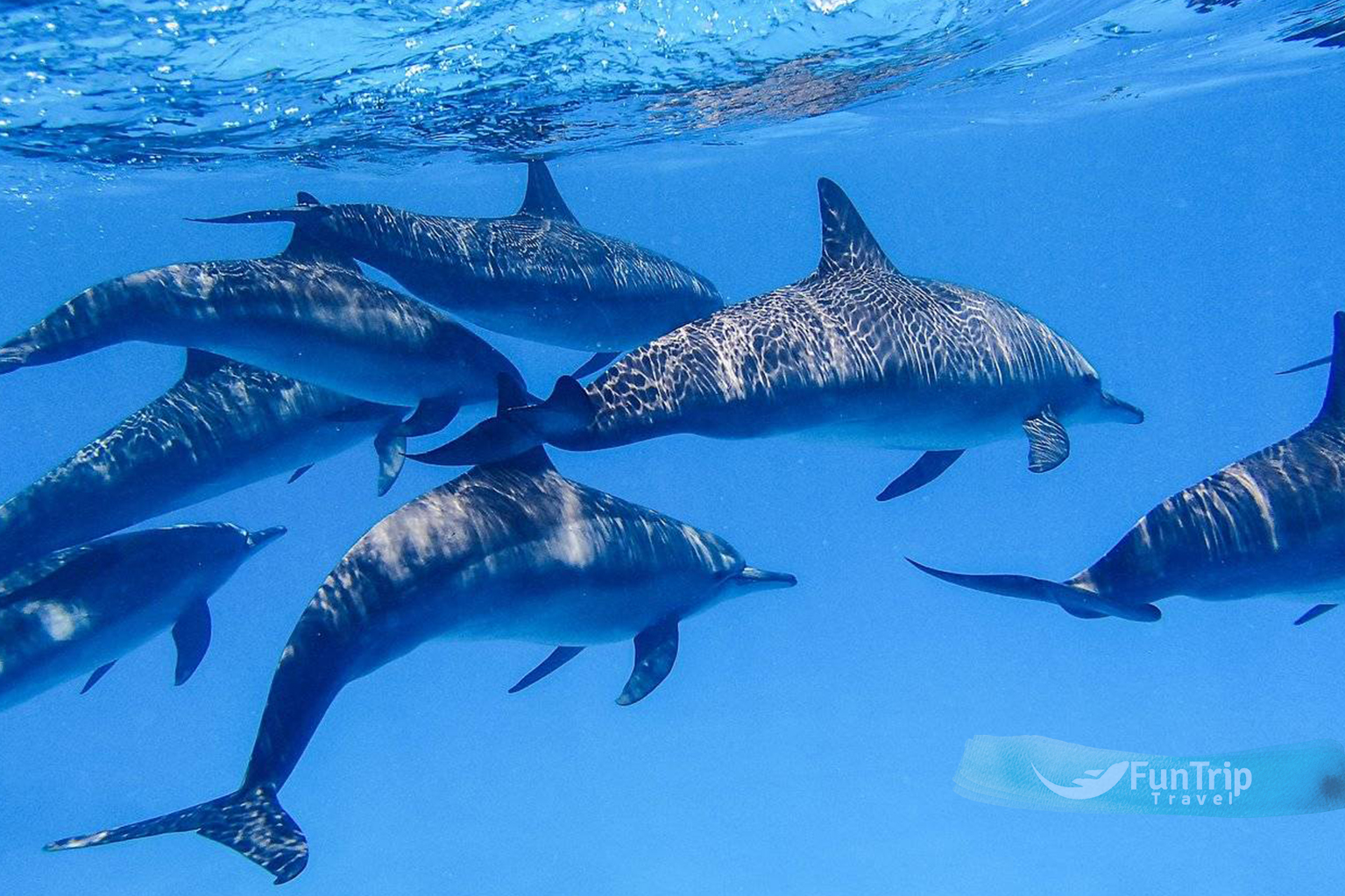
Sataya Reef
This is another place where you can see the dolphins and enjoy your time. It is located 50 km north of Berenice and it is a horseshoe-shaped reef. The place contains a big collection of coral reefs and it extends to a depth from 4 to 40 meters. When you visit the Sataya Reef, you can swim and snorkel with spinner dolphins in their natural habitat, there are also snappers, barracudas, and white sharks, and you will have a great time there. It is like a big lagoon which is not only the home of dolphins but also all types of colourful fish, like angelfish and butterflies that provide flashes of colour.
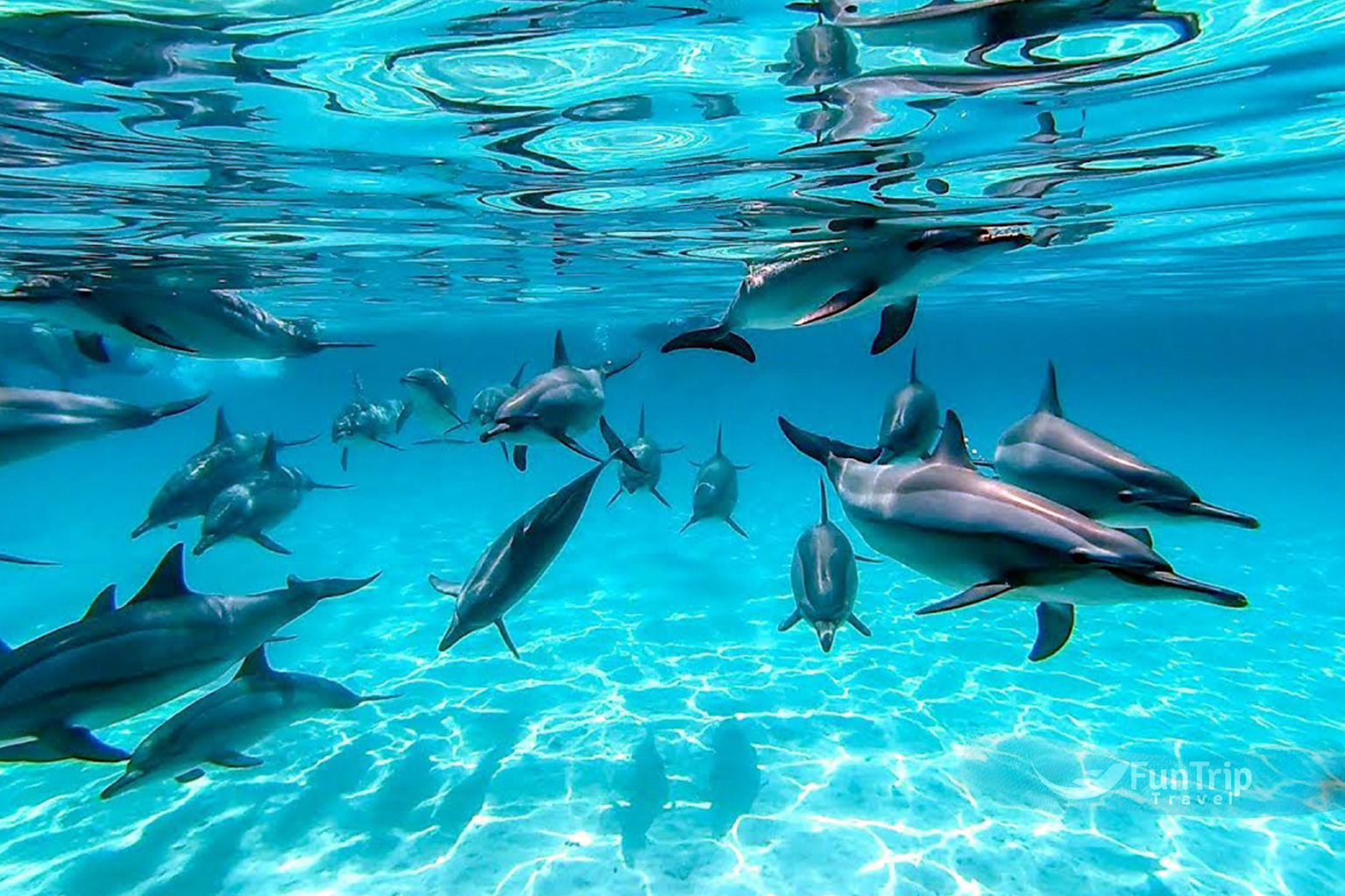
Mangroves
Can be found in the Qula’an area of Wadi El Gemal Reserve, creating a stunning underwater landscape. A wall surrounds the mangroves to keep people from damaging them or stepping on their roots that protrude on the ground’s surface. Mangroves range in height from 3 to 6 metres long. Mangroves can be found at Wadi El Gemal and Hamata; they are one of the world’s rarest plants, found only in four places, including Egypt. Mangrove tree leaves are used medicinally, in the tanning of leather, and as natural colouring agents.
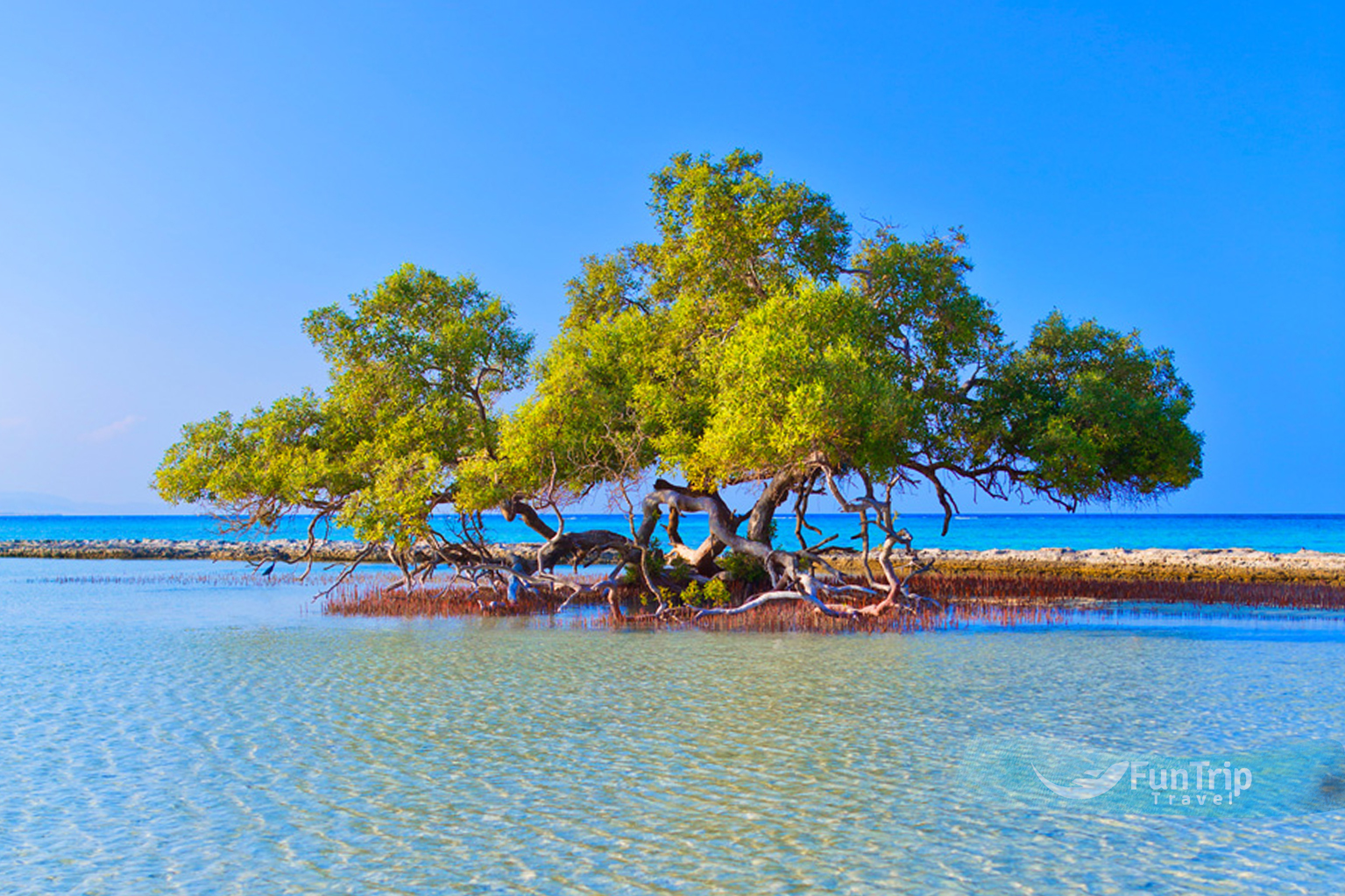
Marsa Alam’s Desert Safari
Is a popular tourist activity, particularly during the winter season. You may explore more of the desert beneath the celestial skies and bright stars. Explore the old Bedouin culture hidden between the beautiful sands of western deserts by riding a camel or driving a four-wheel vehicle.
Many tourism firms conduct regular morning safari tours. Sunset safari treks are popular among tourists. Wadi El Gemal is one of the best destinations for safaris, stretching for over 200 km deep into the desert. Some visitors enjoy spending the entire night on the desert, taking in the splendour of the night sky, stars, and full moon.

Wadi El-Gemal
The Wadi al-Gimel Protectorate is a stunningly magnificent terrain located in the southern regions of the Red Sea’s Eastern Desert, approximately 330 km south of Hurghada and 40 km south-west of Marsa Alam. It covers an area of 7,450 km2, including 60 km of sea shoreline and 50 km of eastern desert mountains. Wadi El Gemal was designated as a reserve in 2003 to protect the ruins of Rome’s emerald mines. The principal archaeological site here is Sikait, which was the base for miners ordered to dig the rich green stone from the barren mountains. A modest temple devoted to the goddess Isis is cut into the rock face, surrounded by the decaying ruins of humble stone homes. Nearby are the ruins of Nugrus, where the actual mine was located, as well as the remains of two tiny settlements (Apollonia and Gelil), which were once trading posts. This arid desert with scattered acacia trees and craggy mountains offers breathtaking views as well as archaeological remnants. It also has a varied range of marine and mountain resources. To get there, take a four-wheel drive, and when you arrive at Wadi El Gemal, you will see the reserve’s delta, which contains rare species of trees, palms, and lakes mixed with saltwater, as well as the gaps that sea turtles have dug in the sand to lay their eggs. You will enjoy the wonderful nature even more, especially when you see the mangrove tree that thrives in the seawater. The reserve also features uncommon and endangered animal, bird, and falcon species that you may observe throughout your tour, as well as rare deer, eagles, and rabbits.Wadi El Gemal Reserve contains geological formations rich in precious minerals such as emeralds, decorative stones, feldspar, lead, and manganese. There are also ruins of ancient military towers, castles, and mining sites for gold, gemstones, and granite. Consider visiting Hankorab Bay to swim amid the beautiful coral reefs. It is ideal for snorkelling and diving enthusiasts, as well as newbies, due to its protection from waves and currents. While diving there, you will encounter a variety of species, including butterflyfish, parrots, and damasks. When you visit the reserve, you will see how the locals live, herd, and harvest various plant species for food and commerce. Some reserve people continue to live in huts, which are modest constructions built of palm trunks or other natural elements, and they serve as guides for many tourists.
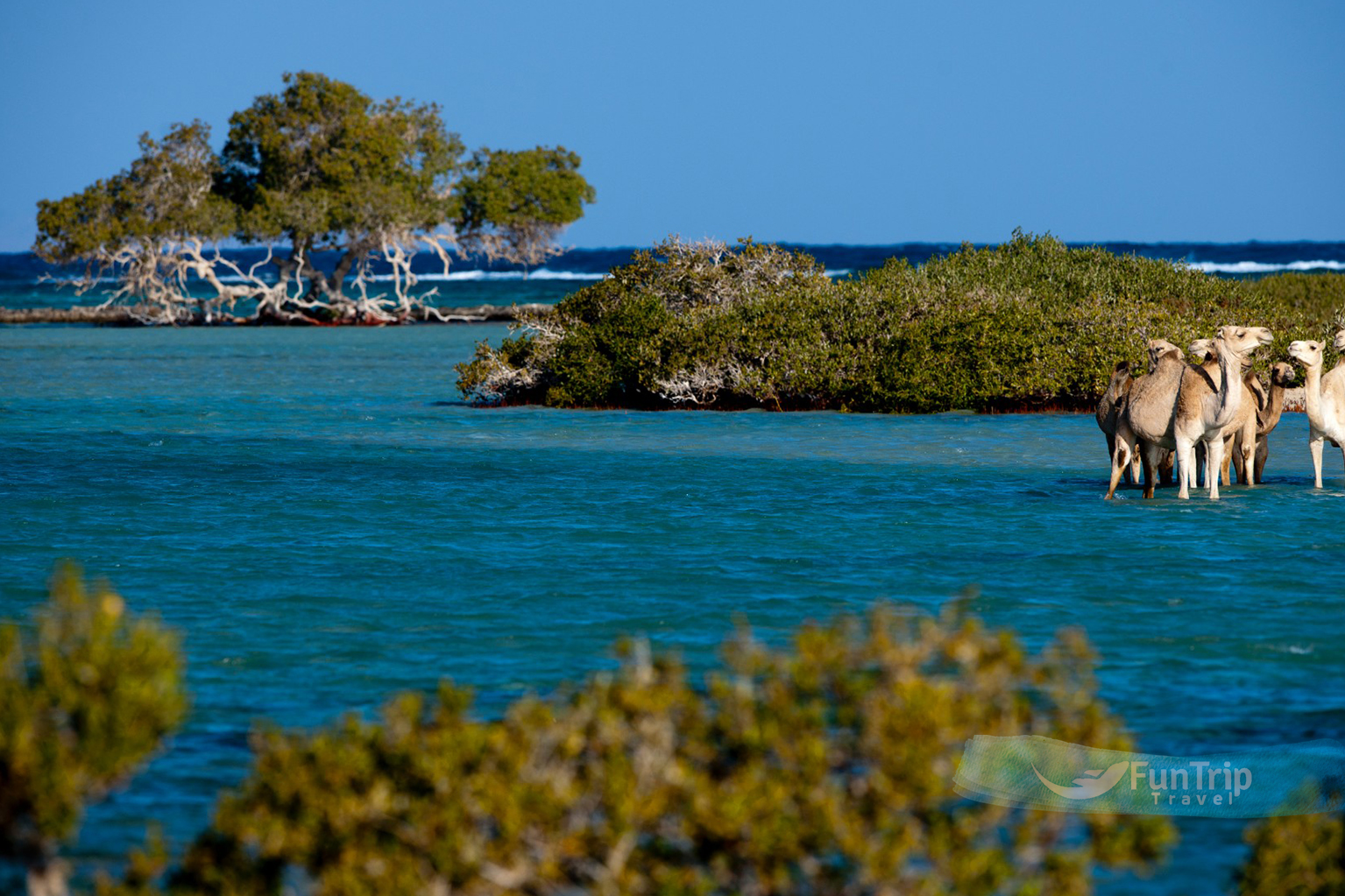
Sharm El Luli
A pristine sand beach with azure water and excellent coral and fish viewing can be found in the middle of the Wadi Gimal Protectorate, 60 km south of Marsa Alam. Sharm El Luli has no development because it is located within a national park; there are no hotels, restaurants, or shops, and no facilities. The majority of the few visitors come for the day, bring what they need, and take everything with them when they leave.

Marsa Muarak
Located 60 km north of Marsa Alam, shares similarities with Abu Dabbab Bay in terms of ecological richness along the southern Red Sea coast. Marsa Mubarak has provided shelter and habitat for sea animals and turtles for hundreds of years, thanks to the removal of tourist boats from the area and the divers’ dedication not to disturb these aquatic creatures.
Coral reefs can also be found at Marsa Alam, as the bay is made up of sandy soil covered in a thick layer of marine weeds, as well as many small sandhills that cover the sandy areas. If you prefer to dive or snorkel at Marsa Mubarak, the finest places to go are the northern and southern sections, which have a diverse range of hard and soft corals. The bay’s national and natural wealth have made it one of the best spots in Marsa Alam for snorkelling and diving, and many tourists come here to participate in these pleasurable activities.
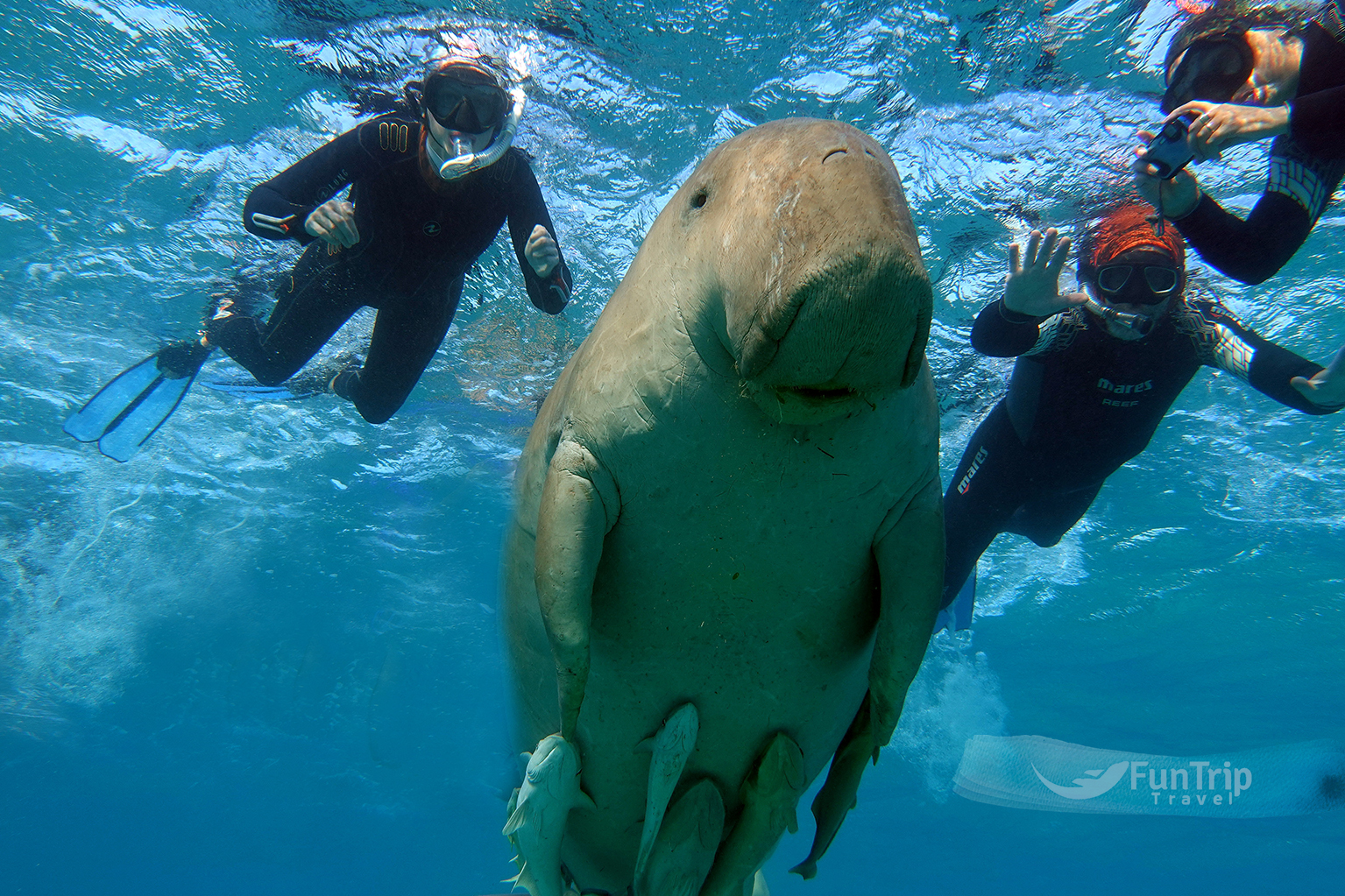
Qula’an
Marsa Alam is well-known for its stunning beaches. Qula’an is one of the city’s nicest beaches, and it is located in the south. There, you can view the beautiful environment around you with no man-made structures, and it is recognised by its clean water, smooth sand, and mangrove trees. Tourists flock to the area to appreciate the natural beauty and participate in a variety of activities such as snorkelling and diving. Aside from that, the pleasant weather and brightness of the sun make it ideal for camping, and the mangrove trees located within the seawater in the Qula’an area draw hundreds of visitors and Egyptians each day. It is an ideal location for a fun day out with friends and family.
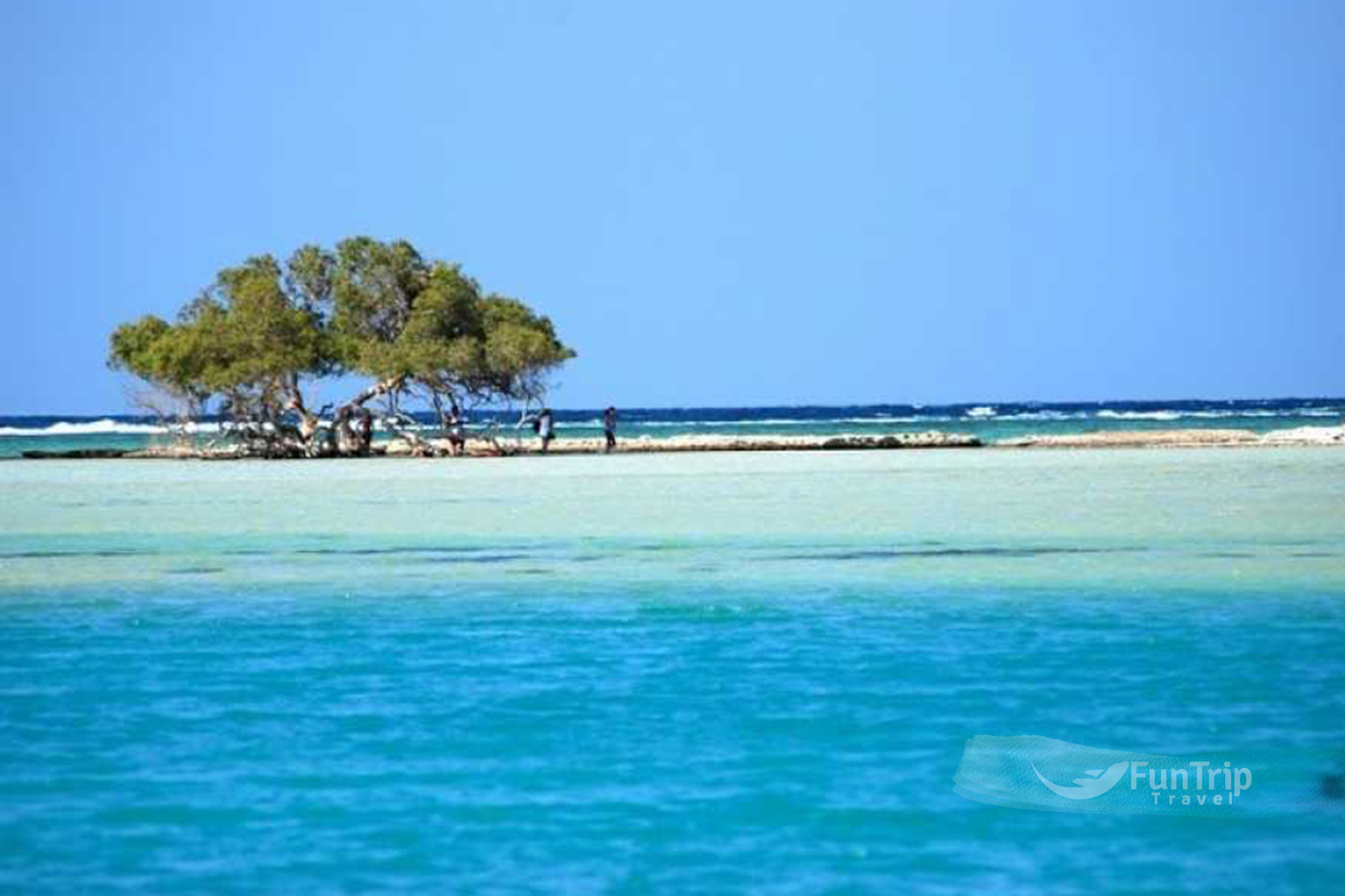
Hamata Island
Is made up of three islands in Wadi El Gemal National Park, approximately 130 km south of Marsa Alam. The islands offer sandy beaches and peaceful lagoons for snorkelling, swimming, and relaxation.
When you visit the island to dive, you will be surrounded by natural splendour. There are over 450 species of coral and over 1200 fish. You will also be able to witness a variety of bird species that dwell on the island, including the Sooty Falcon, the Bridled Tern, the Caspian Tern, the Green Backed Heron, and many others, as well as stunning water creatures such as dugongs and spinner dolphins.
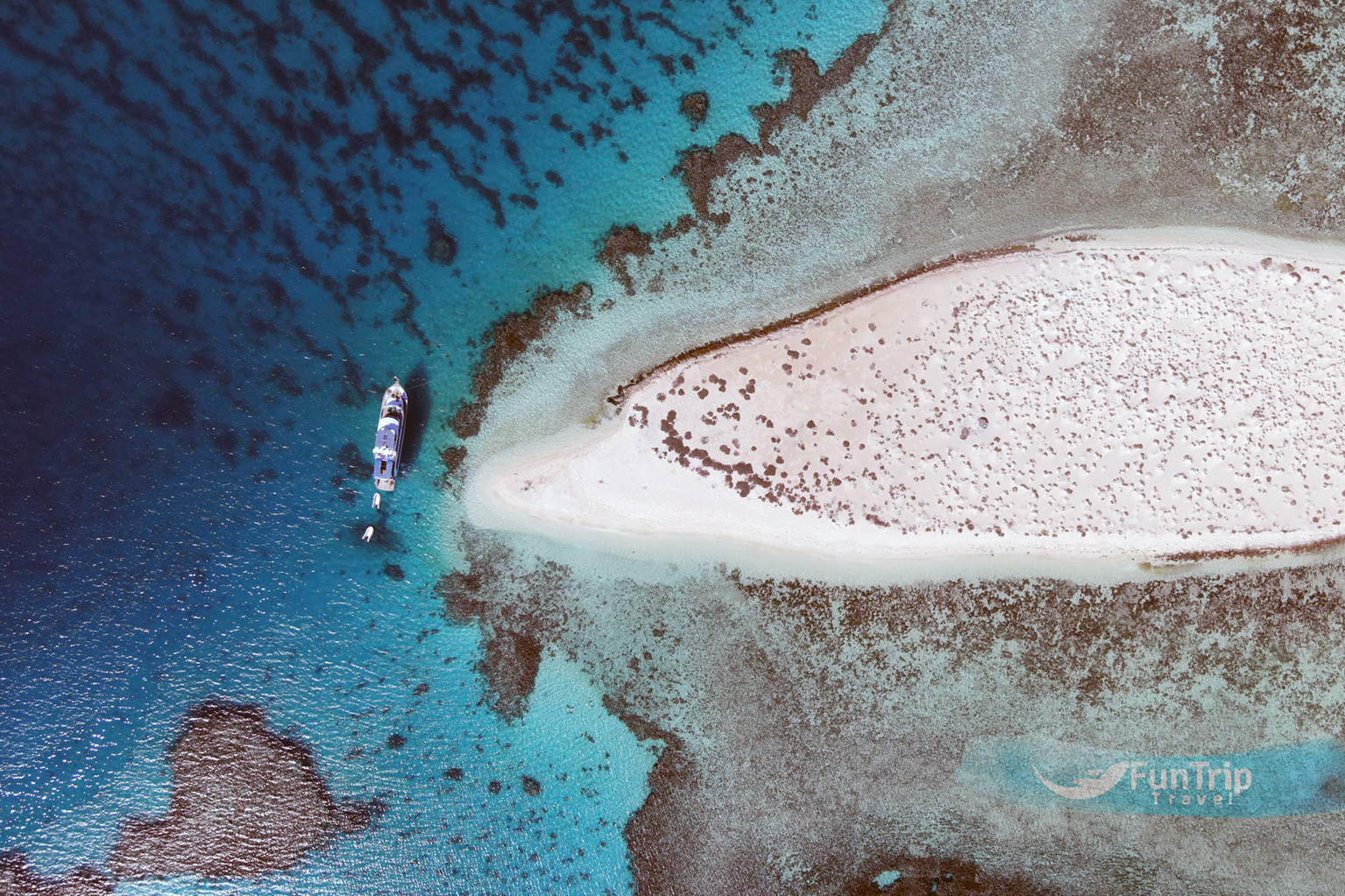
Berenice
Berenice, founded in 275 BC by Ptolemy II Philadelphus, was one of the most important harbours and trading posts on the Red Sea coast between the third and fifth centuries AD. The ruins of the ancient town, including the Temple of Serapis, are located just south of the modern village. Excavations are still going on; in between seasons, archaeologists cover the site to aid preservation, so there’s not much to see outside of the crystal-clear water.
Berenice is 150 kilometres south of Marsa Alam, which has the closest airport.
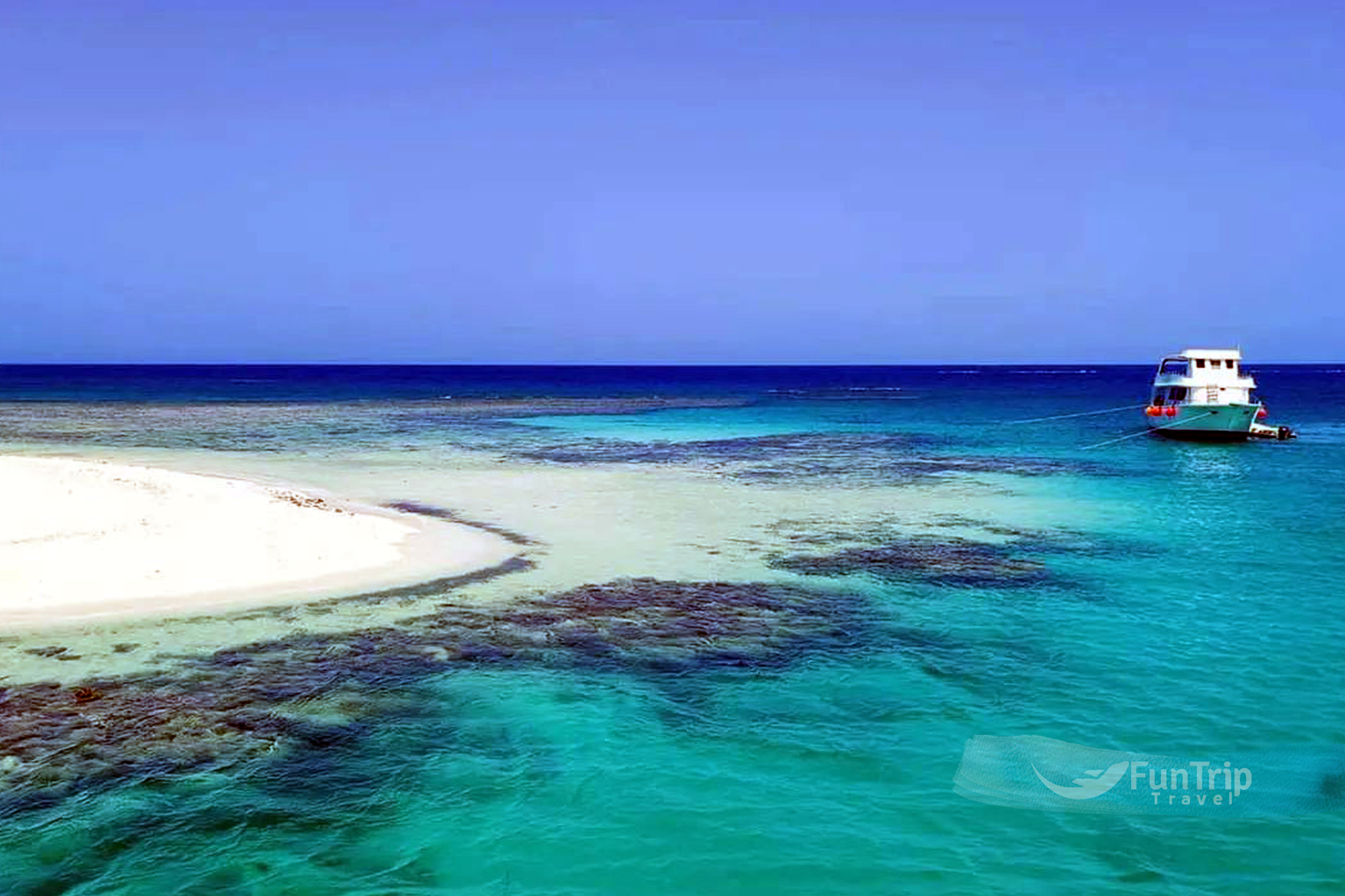
Sayyed Al Shazili Tomb
Numerous Islamic tombs and shrines dot the Eastern Desert. Sayyed Al Shazili, a Moroccan holy man and Sufi leader, is one of the most well-known. Al Shazili founded his brotherhood in Alexandria and was on his way to Mecca when he died in the desert in 1258. Thousands of Sufis attend his moulid (religious festival) on the 15th of the Muslim month of Shawal.
The sheikh took part in the Battle of Mansourah in 1250, when Ayyubid forces defeated King Louis IX of France’s Seventh Crusade. The sheikh’s tomb was restored by King Farouk in 1947, and it now has an asphalt road leading to it.
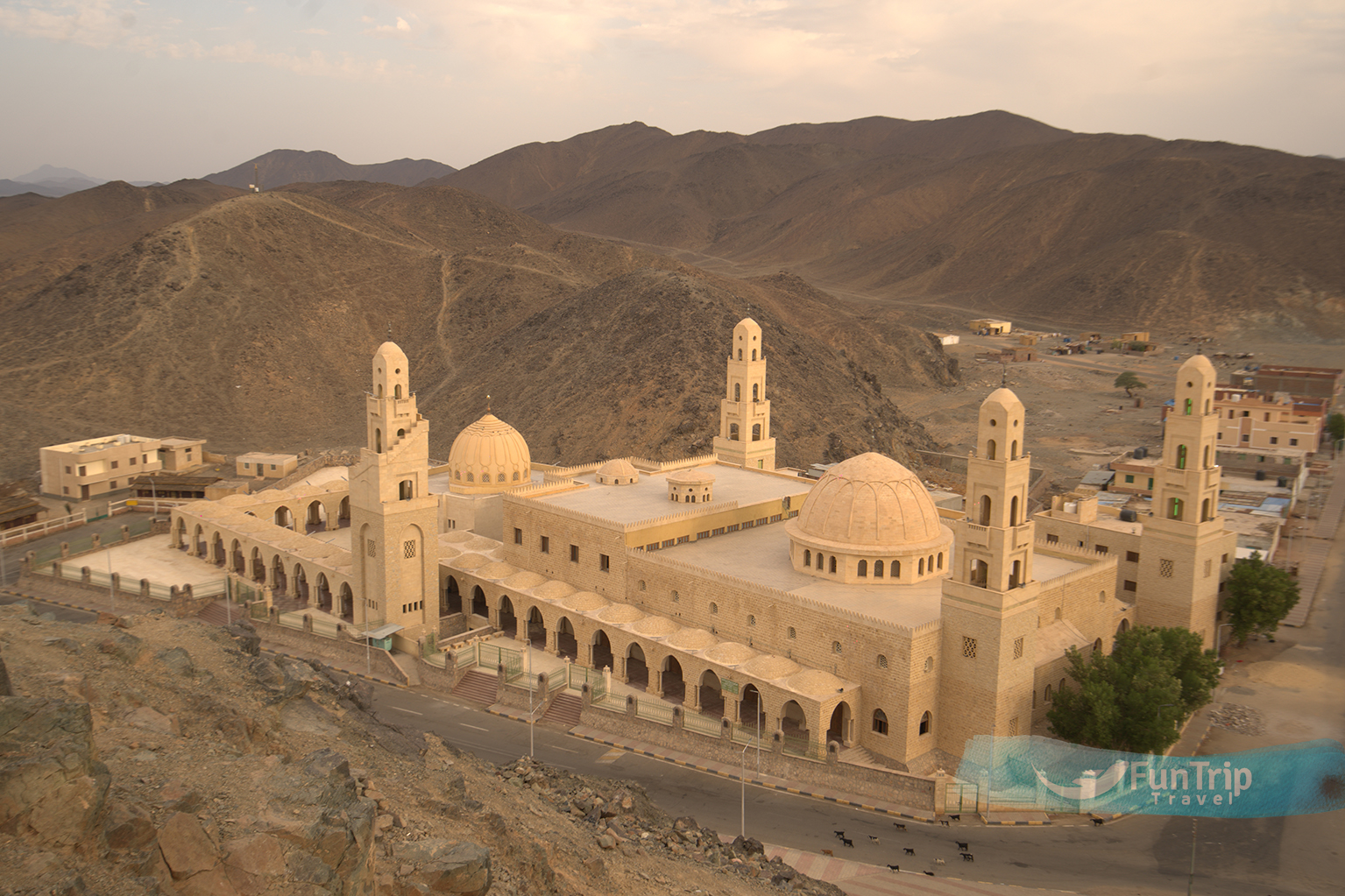
Gebel Elba “Mount Elba”
The Halaib Triangle includes the mountain, which reaches a height of 1,435 metres, and the adjacent national park. Sudan and Egypt dispute the land, however it is currently controlled by the Egyptian government. The national park is 250 km south of Marsa Alam, and the main coastal road runs through it. However, obtaining permission to visit is difficult, and even if granted, a police officer may accompany you on your journey. This is owing to the close proximity of the Sudanese border, as well as concerns over tourism’s influence on the fragile ecosystem. As a result, Gebel Elba is one of the least explored locations in the country, which is a huge advantage for anyone who receives the proper papers because it offers an environment and species diversity that is unrivalled anyplace else in Egypt. Most people who make it there have a beautiful memory that will last a lifetime. The park encompasses a vast stretch of coral reef and mangrove coastline, 22 Red Sea islands, a 20-kilometer-wide desert coastal plain, and a mountain range whose main peaks include Gebel Elba, Gebel Shellal (waterfall mountain) at 1,409 metres, Gebel Shendodai at 1,526 metres, and Gebel Shendib at 1,911 metres. Gebel Elba is nearest to the sea, while the other peaks are farther south and inland, near the Sudanese border. This place is special because, while being in the Saharan region, it receives abnormally significant rainfall. This is due to a combination of prevailing north-east rain-bearing winds, a curve in the shoreline that allows the coast to align itself across the direction of these wind currents, and the mountain range, which encourages the moist clouds to rise. This leads to cooling, condensation, and finally precipitation. Only a small portion of this precipitation falls in the form of heavy rain. Mist clouds create what has been dubbed a mist oasis around Mount Elba and, to a lesser extent, the other peaks. As the humidity in these clouds rises to 100 percent, the tiny water droplets combine into larger ones, resulting in a light drizzle. Furthermore, as the surface temperature of the rocks and other exposed surfaces cools overnight, much of the remaining water vapour in the air condenses into droplets in the form of dew.
